|
Biographies
Source:
History
of Cuyahoga Co., Ohio
Published by D. W. Ensign & Co.,
1879
< BACK TO BIOGRAPHICAL INDEX FOR 1879 >
< BACK TO ALL
BIOGRAPHICAL INDEXES FOR CUYAHOGA COUNTY >
| |
LEONARD
CASE. The name of Leonard Case will long be
held in grateful remembrance in the city of Cleveland, to the
early prosperity of which he was an active contributor, and for
the benefit of which so much of the property he acquired has
lately been devoted through the generosity of his son bearing
the same name. He was born in Westmoreland county,
Pennsylvania, on the 20th of July, 1784. In the year 1800
he accompanied his father to Trumbull county, Ohio, where the
latter located on a farm near Warren. Young Leonard
was then sixteen years of age, and as the eldest son, assumed,
in the invalid condition of his father, the chief management of
affairs on the farm.
A very severe illness left the youth a cripple in 1801,
and seeing, therefore, that his days as a farmer were over, he
turned his attention to educating himself as a surveyor.
By the aid of means gained by such mechanical labors as he could
perform, he acquired from books a fair knowledge of the
business. In 1806 he obtained employment in the land
commissioner's office at Warren, where his efforts won him
favorable notice, and created valued friends, Mr. John D.
Edwards, recorder of the county, being one of the most
steadfast. Under his advice young Case acquired
sufficient knowledge of the law to be admitted to the bar.
During the war of 1812 Mr. Case was appointed to
collect the taxes of non-residents on the Western Reserve, and
in 1816 was called to Cleveland to be cashier of the newly
organized Commercial Bank of Lake Erie. To his banking
business he added the occupations of lawyer and land agent.
After leaving the bank he devoted himself assiduously to the
pursuits just named, and after 1834 gave al his time to the land
business, in which he acquired a very large fortune.
Mr. Case took a warm interest in the progress of Cleveland,
contributed liberally to all public improvements, and is said to
have begun the work of planting the trees, the luxuriant foliage
of which now so pleasantly shade the thoroughfares of the Forest
City. From 1821 to 1825 he was president of Cleveland
village, and was the first auditor of Cuyahoga county. He
was a warm advocate of the canals in the State legislature, and
was one of the projectors of the Cleveland, Columbus and
Cincinnati railway.
His fortune increased with his age, but it did not, as
in so many cases, harden his heart or close his hand, and every
good cause found in him a generous friend. He died on the
7th of December, 1864, leaving a very large amount of both real
and personal estate, which passed to his only surviving son,
also named Leonard Case. That the latter has
inherited his father's disposition, as well as his name and
property, is shown by many acts, and especially by his crowning
gift of the "Case building," valued at three hundred thousand
dollars, to the Cleveland Library Association - a gift seldom
equaled in the annals of private munificence.
Source: History of Cuyahoga Co., Ohio - Published by D. W.
Ensign & Co., - 1879 - Page 336 |
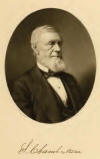 |
SELAH CHAMBERLAIN.
This gentlemen is of English descent, and was born in
Brattleboro, Vermont, on the 4th of May, 1812. His father,
also named Selah Chamberlain, was a native of that place
and by occupation a farmer. He received a good education
in his native town and, at the age of twenty-one, entered a
grocery store in Boston, Massachusetts, where he remained two
years.
He then removed to western Pennsylvania and engaged in
the construction of the Erie extension of the Pennsylvania
canal, and afterward of the Ohio and Pennsylvania canal.
By prudent and sagacious management he soon became enabled to
enlarge his operations, and next obtained contracts on the
Wabash and Erie canal. In 1845 he removed to Canada, and
during two years was engaged on the canal improvements on the
St. Lawrence river. At the expiration of his connection
with that work he returned to Vermont and established the firm
of Chamberlain, Strong & Co. This firm had
the largest portion of the contract for the building of the
Rutland and Burlington railroad, connecting Boston with the
lakes, and the entire management of its construction.
While carrying on this work Mr. Chamberlain also became
prominently interested in the construction of the Ogdensburg and
Rouse's Point (now Lake Champlain) railroad.
In 1849 he removed to Cleveland, Ohio, and took the
entire contract for the construction of the Cleveland and
Pittsburg railroad which was successfully completed in 1851.
Subsequently he was engaged for several years in
railroad-building in the West and Northwest, mainly in
Wisconsin, Minnesota and Iowa. One of the principal lines
constructed by him was the Lacrosse and Milwaukee railroad,
which he operated under lease or mortgage until the bond-holders
reimbursed him in full. He also constructed the Minnesota
Central railroad, and afterward became largely interested in it
and the president of the company owning it.
His latest work in that line was the building of the
Lake Shore and Tuscarawas Valley railroad, of which he was the
largest stockholder, as well as sole contractor. In
addition to these railroad operations he was also connected with
other important industrial enterprises. He was a large
stockholder and also president of Cleveland Transportation
Company, an organization which he was mainly instrumental in
forming.
He was a director of the Cleveland Iron-Mining Company,
in which he held a heavy interest. In 1871 he established
a general banking-house, under the name of Chamberlain,
Gorham & Perkins, which soon become widely known as one of
the most substantial banking firms in the State. In 1873
the Residence Insurance Company, of which he is one of the
founders, elected him as its president. In January, 1875,
he became largely interested in the purchase of the Lake Shore
and Tuscarawas Valley railroad, which was changed to the
Cleveland, Tuscarawas Valley and Wheeling railroad, of which he
was made president in February of that year.
Mr. Chamberlain has been remarkably successful
in all his business undertakings, and entirely by his own
efforts has acquired a capital which enables him to carry great
enterprises to a successful termination.
As a citizen he enjoys an enviable reputation, and is
known as a liberal but unostentatious contributor to all
benevolent purposes or public interests. He was an earnest
supporter of the Union during the rebellion, and contributed
freely to and the cause of freedom.
He has, for many years been a prominent member of the
Second Presbyterian church, and a liberal supporter of the
charitable and benevolent enterprises connected with it.
He was married, in 1844, to Miss Arabella Cochran of
Pennsylvania.
Source: History of Cuyahoga Co., Ohio -
Published by D. W. Ensign & Co., - 1879 - Page 337
Portrait Source: History of Cuyahoga Co., Ohio - Published by
D. W. Ensign & Co., - 1879 - Page 244a |
 |
HENRY CHISHOLM Source: History of Cuyahoga Co., Ohio -
Published by D. W. Ensign & Co., - 1879 - Page 338
Portrait Source: History of Cuyahoga Co., Ohio - Published by
D. W. Ensign & Co., - 1879 - Page 308a |
 |
WILLIAM CHISHOLM Portrait Source: History of Cuyahoga Co.,
Ohio - Published by D. W. Ensign & Co., - 1879 - Page 308a |
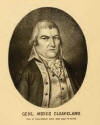 |
GENERAL MOSES CLEAVELAND Source: History of Cuyahoga Co.,
Ohio - Published by D. W. Ensign & Co., - 1879 - Page 363
Portrait Source: History of Cuyahoga Co., Ohio - Published by
D. W. Ensign & Co., - 1879 - Page 222a |
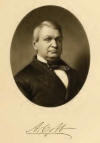 |
AHIRA COBB Source: History of Cuyahoga Co., Ohio -
Published by D. W. Ensign & Co., - 1879 - Page 338 |
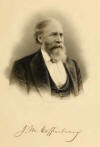 |
JAMES M. COFFINBERRY Source: History of Cuyahoga Co., Ohio
- Published by D. W. Ensign & Co., - 1879 - Page 340
Portrait Source: History of Cuyahoga Co., Ohio - Published by
D. W. Ensign & Co., - 1879 - Page 316a |
| |
WILLIAM COLLINS Source: History of Cuyahoga Co., Ohio
- Published by D. W. Ensign & Co., - 1879 - Page 341 |
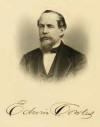 |
EDWIN COWLES Source: History of Cuyahoga Co., Ohio -
Published by D. W. Ensign & Co., - 1879 - Page 343 |
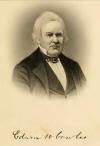 |
EDWIN WEED COWLES Source: History of Cuyahoga Co., Ohio -
Published by D. W. Ensign & Co., - 1879 - Page 194a |
| |
SAMUEL COWLES,
a lawyer, was born in Norfolk, Connecticut, June 8, 1775, and
died at Cleveland, Ohio, in November, 1837. His father was
a representative New England farmer. He was educated at
Williams College, and graduated there in the year 1798,
afterwards serving as tutor there for two years, when he
commenced the study of law in Hartford, and was admitted to the
bar. He practiced his profession in Farmington and
Hartford till about 1820, when he removed to Cleveland, then a
village of about five hundred inhabitants. There he went
into partnership with the late Alfred Kelley, and carried
on the law business with him for several years. Afterward
Mr. Cowles formed a copartnership with the late student
of his, Sherlock J. Andrews; finally giving the business
up to him and retiring from the practice of his profession about
the eyar 1834. Hon. J. W. Allen studied law under
Mr. Cowles in the year 1825. IN 1839 he was
appointed a judge of the court of common pleas, which position
he filled at the time of his death.
In 1832 Mr. Cowles was married in Lenox,
Massachusetts, to Miss Cornelia Whiting. In 1833 he
erected the mansion on Euclid avenue, now used as an Ursuline
convent, and resided in it till his death. He was a good
representative of the gentlemen of the old school, a high-minded
lawyer, of irreproachable character, of dignified bearing, and
of the most fastidious tastes. His society was sought
after, especially by the cultivated. He was a
brother-in-law of the late Dr. Edwin W. Cowles, and uncle
to Mr. Edwin Cowles of the Cleveland Leader.
Source: History of Cuyahoga Co., Ohio
- Published by D. W. Ensign & Co., - 1879 - Page 345 |

T. D. Crocker |
TIMOTHY DOANE CROCKER Source: History of Cuyahoga Co., Ohio
- Published by D. W. Ensign & Co., - 1879 - Page 395
Portrait Source: History of Cuyahoga Co., Ohio - Published by D.
W. Ensign & Co., - 1879 - Page 396a |
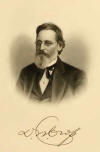
D. W. Cross |
D. W. CROSS,
one of Cleveland's prominent citizens and leading capitalists,
was born on the 17th of November, 1814, in Richland (now
Pulaski), New York. He received an excellent education at
Hamilton Seminary (one of the foremost institutions of learning
in the State), and, upon the completion of his studies in 1836,
removed to Cleveland, where he entered the law office of
Messrs. Payne & Wilson as a student.
While thus employed he received, in 1837, and
appointment as deputy collector of the port of Cleveland, which
position, with a brief interruption, he retained for eighteen
years. During that time he effected many useful reforms
and improvements in the management of the custom-house, and
received from the secretary of the treasury a gift of $500 as an
acknowledgement of his zeal and energy.
During the first years of his holding the office he
continued his law studies, and in due season was admitted to
practice in both the State and United States courts. In
1844 he joined Mr. Robert Parks in a law partnership
which continued until the death of that gentleman in 1860.
In 1848 and 1849 he was elected townshp-clerk of Cleveland (an
important office) by overwhelmingly large majorities, and in
1849 was chosen a member of the city council.
In 1855 Mr. Cross entered upon the most
important enterprise of his life, that of coal-mining. In
company with Oliver H. Perry he purchased one hundred and
fifty acres of land, and leased seveal other tracts, upon
Mineral Ridge, in the Mahoning valley, the coal deposits in
which were beginning to promise important results if properly
worked. Messrs, Perry & Cross entered promptly and
actively into the business of coal mining, and soon landed upon
the Cleveland docks, via the Pennsylvania and Ohio
canals, the first cargoes of coal shipped from Mineral Ridge to
Cleveland.
In 1859 Mr. Perry transferred his interest to
Henry B. Payne, the firm being continued as D. W. Cross &
Co. In 1860 it received an additional partner in the
person of Lemuel Crawford, who retired in 1861 and was
succeeded by Isaac Newton; the firm name being changed to
Cross, Payne & Co. Business operations were at this
time materially widened by the purchase of new coal miens, by
the construction of docks, and by the building of a railway to
connect the Summit Bank with the canal, at Middlebury.
In 1867 Mr. Cross retired from the firm of
Cross, Payne & Co., and rested awhile upon the fruits of his
industry.
Since his retirement from the firm, however, Mr.
Cross has retained his connection with the coal interest to
a considerable extent, and is to-day the owner of some of the
most valuable coal lands in the State. His identification
with the early coal trade of the Mahoning valley, and its
prosperous development under his efforts, were facts of such
importance, not only in his career but in that of Cleveland,
that it would be very difficult to separate entirely the history
of his life from that of the great business just alluded to.
His was the mind that saw how important and necessary
it was that Cleveland should have cheap coal, to the end that
she might become a great manufacturing city, and in opening the
way for cheap fuel he furnished the opportunity for which
Cleveland had so long waited.
Although no longer immediately connected with the coal
trade, Mr. Cross is still actively engaged in important
business enterprises, for a temperament like his could not be
well satisfied with entire inactivity; but, naturally, he enjoys
substantial immunity from the anxieties and labors incident to
his earlier experience. The interests of three important
manufacturing corporations receive the benefits of his
attention. Of each of two of these - the Winslow Car
Roofing company and the Cleveland Steam Gauge Company - he is
the president, and of a third - the Amherst Stone Company - he
is a director. To the conduct of these extensive
enterprises Mr. Cross gives careful heed, and their
substantial success testifies to his excellent administration.
He is a life member of the Western Reserve and Northern
Ohio Historical Society, and a member of the Kirtland Society of
Natural History. With both organizations he has long been
closely associated, and to the latter has contributed many
valuable specimens. He was, in his younger days, a
prominent member of the Cleveland Grays, and in 1837 was the
secretary of that organization. For many years subsequent
to 1839 he was the secretary of the Cleveland Lyceum, a popular
debating society of that period.
Since the beginning of his residence in Cleveland
Mr. Cross has been a devoted disciple of Nimrod and
Isaak Walton, and to this day finds his attachment to the
sports of hunting and angling undimmed. These are his
favorite relaxations, and, in his leisure hours, he follows them
quite as eagerly as of yore.
He was one of the founders of the renowned Winous Point
Shooting Club, which owns over ten thousand acres of land near
Sandusky Ban, and which, in its appointments and scope of
action, is far beyond any similar organization in the country.
In connection with Dr. Darby taxidermist), T. K.
Bolton, E. A. Brown, L. M. Hubby and others, he contributed
largely toward securing the superb collection of game birds now
ornamenting the reception rooms of the club.
As an angler Mr. Cross is not only enthusiast
but an authority. From the Adirondacks to Lake Superior,
streams and lakes have paid tribute to his skill, and in company
with Prof. Horace A. Ackley and Dr. Thomas Garlick
- the pioneers of artificial fish-culture in America - he has
passed many a busy hour upon the shores of Lake Erie in the
successful pursuit of the finny tribe. It was through
Professor Ackley's persuasion that Mr. Cross wrote
the "Piscatonarium," first published in the Cleveland Herald
and afterward in Dr. Kirtland's Family Visitor,
and the Spirit of the Times, as well as in other leading
journals.
Another article from Mr. Cross' pen, entitled
"Big and Small Mouth Bass, and How a Trout takes a Fly,"
published in the Chicago Field of the date of Feb. 8,
1879, assisted materially in settling a vexed question among
scientific sportsmen.
In the evening of his days,
Mr. Cross enjoys the
satisfaction of having sturdily battled with the difficulties of
life and of having produced important results, beneficial alike
to himself and the community. The lesson of such a life
needs no elaboration, since it is conveyed in unmistakable terms
by the simple record of the events.
The wife of Mr. Cross was not only an amiable
companion but was a valuable coadjutor in building up her
husband's fortunes. She was Miss Loraine P. Lee of
Bloomfield, New York, and was married to Mr. Cross in
1840. In 1873 she visited Europe and spent eighteen months
in extended travel, of which she recorded her impressions in a
series of highly interesting letters to the Cleveland Leader.
Shortly after her return she fell ill, and passed to her rest on
the 23d of January, 1875. Devoted to her home and family,
endeared to a large circle of friends, and foremost in acts of
charity and love, her name remains embalmed in the affectionate
remembrance of all who knew her.
Source: History of Cuyahoga Co., Ohio -
Published by D. W. Ensign & Co., - 1879 - Page 345
Source: History of Cuyahoga Co., Ohio - Published by D. W.
Ensign & Co., - 1879 - Page 344a |
 |
JOHN CROWELL
Portrait Source: History of Cuyahoga Co., Ohio -
Published by D. W. Ensign & Co., - 1879 - Page 60a
|
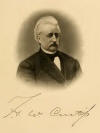
H. W. CURTISS |
HARVEY W. CURTISS, M. D.,
was born at Charlestown, Portage county, Ohio, on the 32ud day
of February, 1824. He is the son of Chauncey B. Curtiss,
a leading farmer and a man of large social and political
influence in Portage county, who takes an active interest in
public affairs, and has filled at different times numerous local
offices of trust.
The subject of this notice studied at and was graduated
from the Grand River Institute, in Ashtabula county. In
1849 he commenced the study of medicine, and in 1851 was
graduated from Cleveland Medical College. He entered upon
the practice of his profession in Pittsburg, Pennsylvania, but
was obliged, on account of ill health, to leave the city.
He then, in 1852, removed to Chagrin Falls, Ohio, where he has
since resided.
Like his father, he early became interested in
political affairs, and when but nineteen years of age "stumped "
his native county in the interests of the Liberty party of that
day. Upon the organization of the Republican party he
united with that body, and became active in local politics.
In the fall of 1869 he was elected a representative
from Cuyahoga county in the Ohio legislature, taking liis seat
in Jiuuiary, 1870. The question whether Ohio should ratify the
fifteenth amendment to the United States constitution was before
the legislature during that year and Mr. Curtiss
took an active part in securing the ratification. He
served as a member of the committees on railroads and benevolent
institutions. In 1871 he was re-elected to the
legislature, and on taking his seat in 1873 was appointed
chairman of the committee on railroads, besides holding places
on several other committees. During this term a number of
bills of more or less importance were advocated by him with
marked success. He also introduced a bill for the
prevention of cruelty to animals, the first legislation on this
subject in the State This bill met with great opposition,
but by persistent efforts of Dr. Curtiss and some
others, a majority of the legislature was convinced of its
propriety and it was duly passed.
In October, 1873, he was elected to the State senate.
The political party to which he belonged was in the minority at
that time, and hence he was assigned to inferior places on
committees. Instead of forwarding desirable measures he
was engaged in combating those he considered deleterious, among
the most noted of which was the "Geghan bill," which it was
claimed was introduced and pressed in the interest of the Roman
Catholic church. In 1875 he was again elected to the
senate, and served as president pro tern. Upon the
resignation of Gov. Hayes and the installation of
the lieutenant governor as acting governor in the spring of
1877, Mr. Curtiss was made president of the senate
and acting lieutenant governor. He took an active part in
the debates during this term.
In the fall of 1877 Dr. Curtiss
peremptorily refused
to become a candidate for renomination, and instructed the
delegates from his township under no circumstances to allow his
name to go before the convention. There was, however, such
a strong desire to see him again in the field, that one hour
before the convention organized parties were dispatched to the
Herald office and a few ballots were hurriedly printed.
Upon the second ballot Dr. Curtiss was renominated
over four competitors. He accepted with great reluctance,
but was elected and served the full term of two years.
In addition to his legislative duties he has taken an
active and a prominent part in the administration of local
affairs. He served for fifteen years as a member of the
village school board, and then resigned. Three years after
he was again induced to become a candidate, and in the spring of
1870 his name was placed on both tickets. He was
re-elected by an almost unanimous vote.
As a politician he ever preserved the strictest honor
and integrity. Possessing great ability, tact and skill as
a legislator, he always exerted his influence in the cause of
right and justice. During the rebellion he was an ardent
supporter of the Union, and contributed in different ways to the
assistance of the National cause. He is an active and
valued member of the Masonic order, and also of the order of Odd
Fellows.
Dr. Curtiss is a man of strong and
unflinching will. He is willing to receive the advice of
others, but when he has once decided on his course, adheres to
it with extraordinary firmness. As a physician he has been
pre-eminently successful, and has attained a wide celebrity.
Of dignified presence, courteous address and high character, he
is in every way fitted for his profession of physician, as well
as for the position of a representative of the people. In
Chagrin Falls he is to a considerable extent the adviser of both
poor and rich, quite a number of the citizens making a
consultation with Dr. Curtiss the first step in
any important transaction. He was married in 1846 to
Miss Olive B. Rood of Charlestown. They have had four
children: Dwight C., engaged in the manufacture of paper
in Akron; Dan P.. a promising lad who died at the age of
thirteen; Paul, and Virginia.
Source: History of Cuyahoga Co., Ohio - Published by D. W.
Ensign & Co., - 1879 - Page 434 |
|
![]()
![]()












